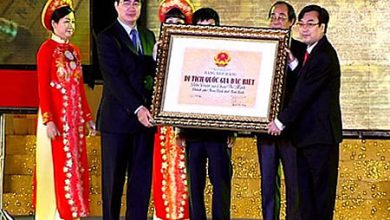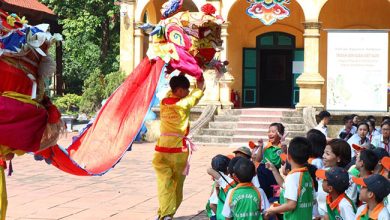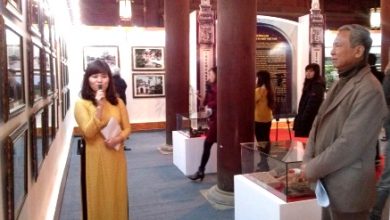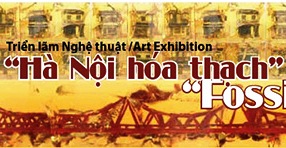Exhibition “Hanoi – Echoes of the braving death oath” commemorating the 75th Anniversary of the Nationwide Resistance Day (19 December 1946 – 19 December 2021)
On the occasion of the 75th anniversary of the Nationwide Resistance Day (December 19, 1946 – December 19, 2021), the Thang Long – Hanoi Heritage Conservation Center organized the thematic exhibition “Hanoi – Echoes of the braving death oath“. The exhibition includes 3 parts which are titled hanging by a thread, Hanoi – Echoes of the braving death oath, and Marching back to Hanoi to look back on the heroic revolutionary tradition of the Capital’s soldiers and people in the early stages of the war against the French.
The exhibition re-presents the intrepidity of the army who were determined to protect each hearth and street corner of the beloved capital. 75 years have passed, but the immortal oath of the offspring of Hanoi, the soldiers of the Capital Regiment, still echoes forever: “Today we welcome the coming into being of the death-braving squad. We swear to protect the capital. As long as we are still alive, the capital will never be lost. We swear!”.
In the winter of 1946-1947, Hanoi went through 60 days and nights of fire and smoke as it fought bravely in the siege of the enemy. These days created an immortal epic that resounds forever in the hearts of many generations of the people of the capital today and tomorrow.
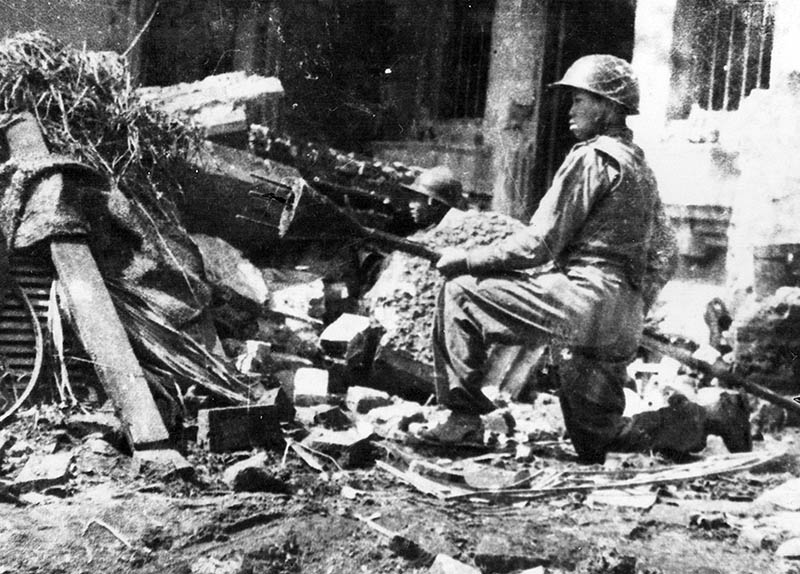
A Hanoi front soldier holding a lunge mine (photo courtesy: Vietnam Institute of Social Science Information)
Hanging by a thread
Intent on robbing our country again, on 23 September 1945, the French colonialists opened fire in Saigon to start the second war of invasion of Indochina with the help of British troops. Then they invaded and occupied the South and South Central Coast while trying to send troops to the North to conquer Hải Phòng, Lạng Sơn and Hải Dương, causing many conflicts and provocations in Hanoi.
Our fledgling revolutionary government had to deal with multiple difficulties of having “enemies inside and outside”. Faced with a future “hanging by a thread”, the Party Central Committee and President Ho Chi Minh adopted flexible struggle measures to maintain peace and uphold national independence while consolidating the government, eliminating internal rebellion, and improving people’s lives. In order to take advantage of time to strengthen our revolutionary forces and avoid having to deal with too many enemies, we adopted a soft but firm strategy of “making concessions to advance” by actively negotiating with France to avoid war. In doing so, we were able to maintain peace for both countries while safeguarding the independence and freedom for the Fatherland followed by the signing of a preliminary agreement on 6 March1946, and then a temporary treaty on 14 September 1946 with the French.
However, the more concessions we made, the more violations the French colonizers made, and the more clearly their malice and aggression were revealed, as General De Gaulles once put it: “France’s intention in Indochina is very simple. We want to restore our sovereignty over Indochina”.
Therefore, despite the goodwill of Vietnam, on 15 and 16 December 1946, the French opened fire on many places in Hanoi in an act of provocation. On December 17, 1946, they destroyed our fortifications on Lò Đúc Street, then committed bloody massacres on Hàng Bún and Yên Ninh streets. On 18 December 1946, General Moliere sent us two ultimatums demanding that we destroy all fortifications and obstacles on the streets and that the duty of maintaining law and order in Hanoi be handed over to them together with occupation of the Department of Finance. They threatened that if those ultimatums were not met by the Vietnamese Government, the French troops would take actions no later than the morning of 20 December 1946.
The situation left the Party, Government, President Ho Chi Minh and our people with no other choice but to take up arms to fight and launch a nationwide resistance war to protect national independence.
Hanoi – echoes of the braving death oath
On the night of 19 December 1946, in response to President Ho Chi Minh’s “Call for the Nationwide Resistance”, Hanoi’s army and people stood up side by side with the whole country. Láng Fortress fired the first bullets that marked the beginning of a prolonged war of resistance. In the battle with the enemy, the Hanoi front became a typical example of the people’s war strategy. Every house, every street became a battlefield, a trench. Every citizen, from a 9-year-old boy to a gray-haired old man, from a musician to a peasant woman, from a petty bourgeois intellectual to a blue-collar worker, etc all assisted the heroic army of the Capital Regiment and the soldiers in defending the city, detaining the enemy, and creating conditions for the Party Central Committee and the Government to withdraw to a safe battle zone. All those ordinary people were bound together by the same will of “braving death for the survival of the Fatherland”. Their deeds helped create Hanoi’s epic song 60 days and nights of battle full of smoke and fire.
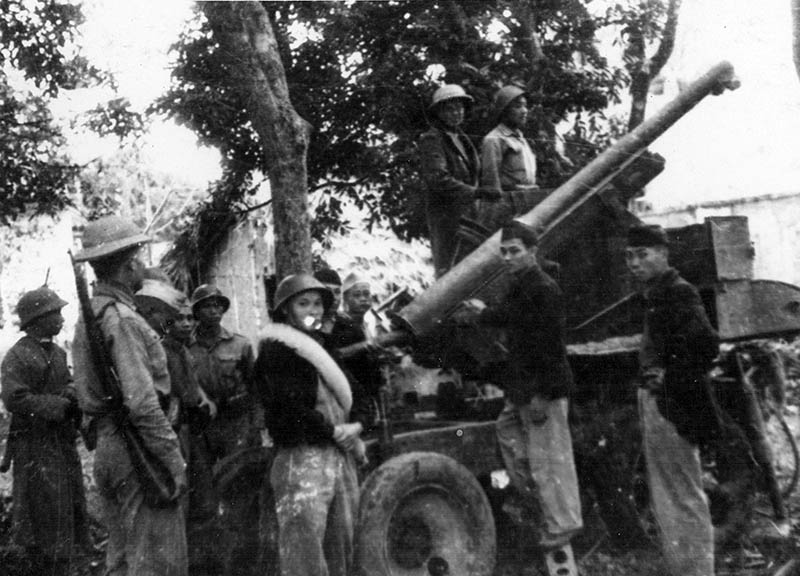
Láng Fortress – where the first fire was opened to mark the beginning of the Nationwide Resistance on the evening of 19/12/1946. (photo courtesy: Vietnam Institute of Social Science Information)
After 60 days and nights of resilient, heroic, and creative fighting, Hanoi’s army and people successfully protected the safety of the headquarters, evacuated, and ensured the safety of the people while transporting thousands of tonnes of machinery and materials to the Safe Zone and creating initial potentials for the resistance war. The capital’s army and people fought hundreds of battles, drained a lot of the enemy’s force, kept them locked up in the city for a long time while creating conditions for the whole country to enter the war and deploy a long-term battle strategy.
Marching back to Hanoi
After successfully completing the set target, the soldiers of the Capital Regiment were ordered to withdraw from Hanoi to continue the long-term resistance war. As they movingly bid farewell to the capital, the soldiers quickly wrote the following lines on the wall with bricks: “Dear Hanoi, I will return!”, “Invaders, you will be doomed!”. And after 9 years of long-term resistance, on 10 October 1954, soldiers of the Capital Regiment fighting in the former Hanoi front led the Pioneer Army to take over the capital to joyful cheers and boundless happiness of the people of the capital and the whole country.
The exhibition is open to visitors from 16 December 2021 with an online format at the following website: http://:trungbayonline.hoangthanhthanglong.vn.
Thăng Long – Hà Nội Heritage Conservation Centre

